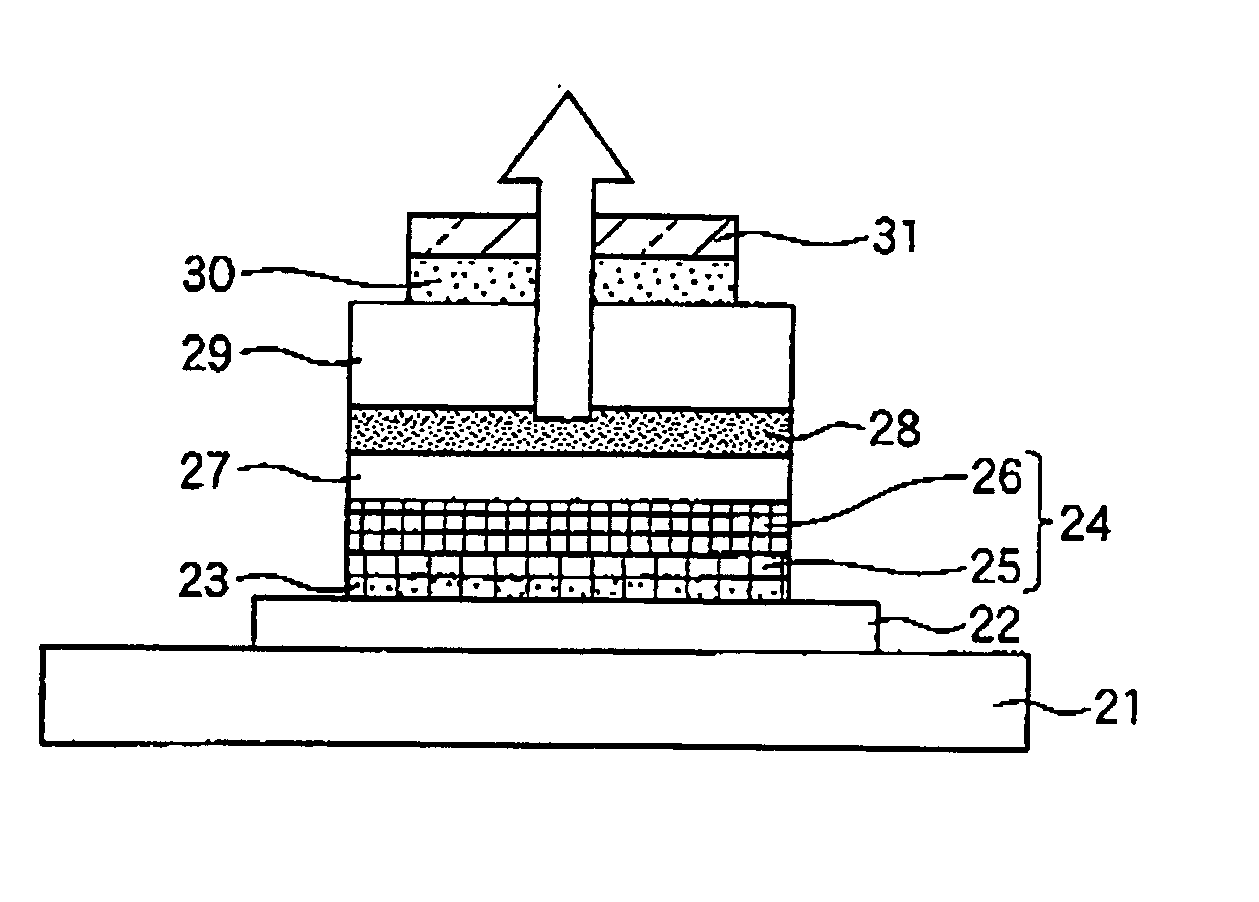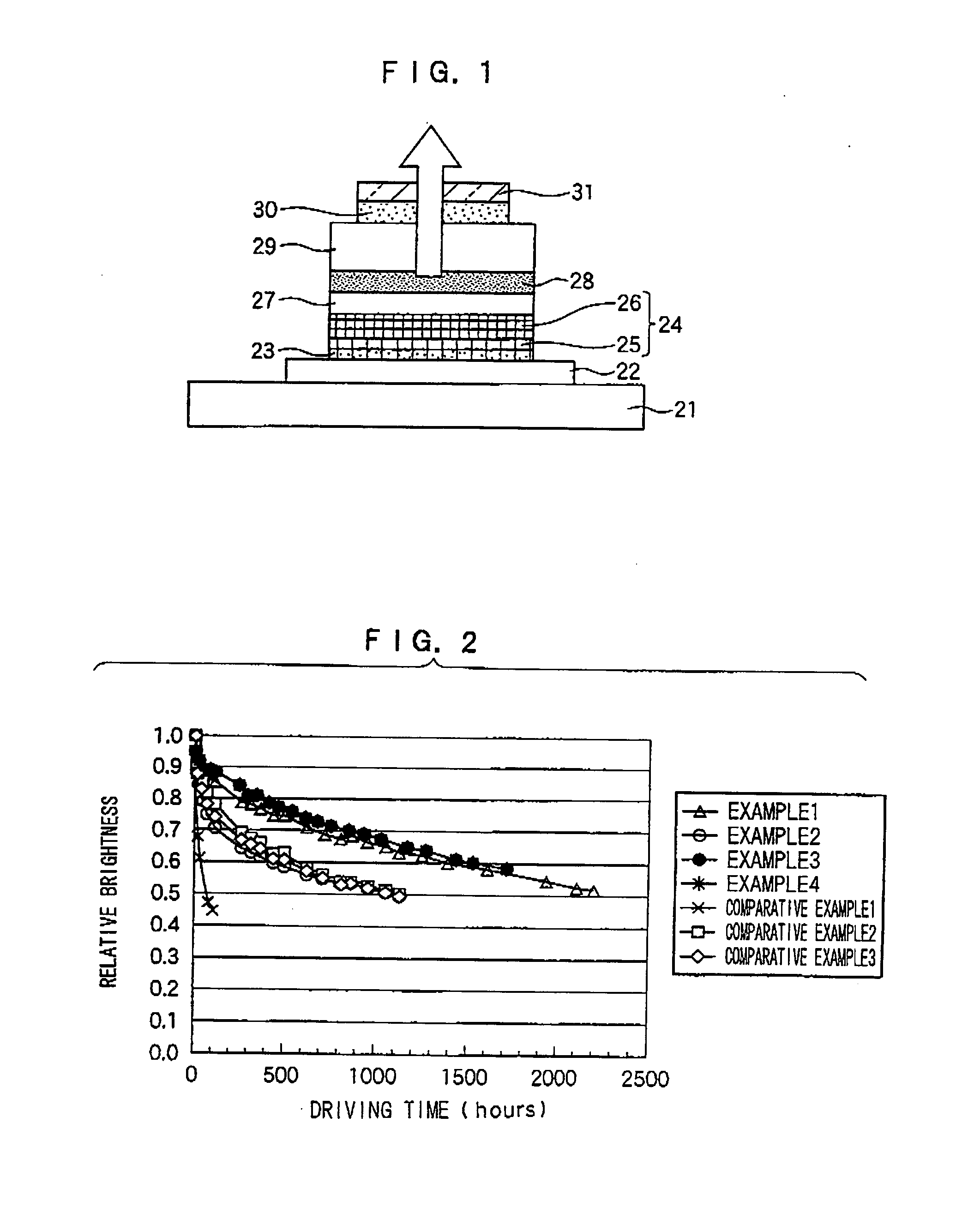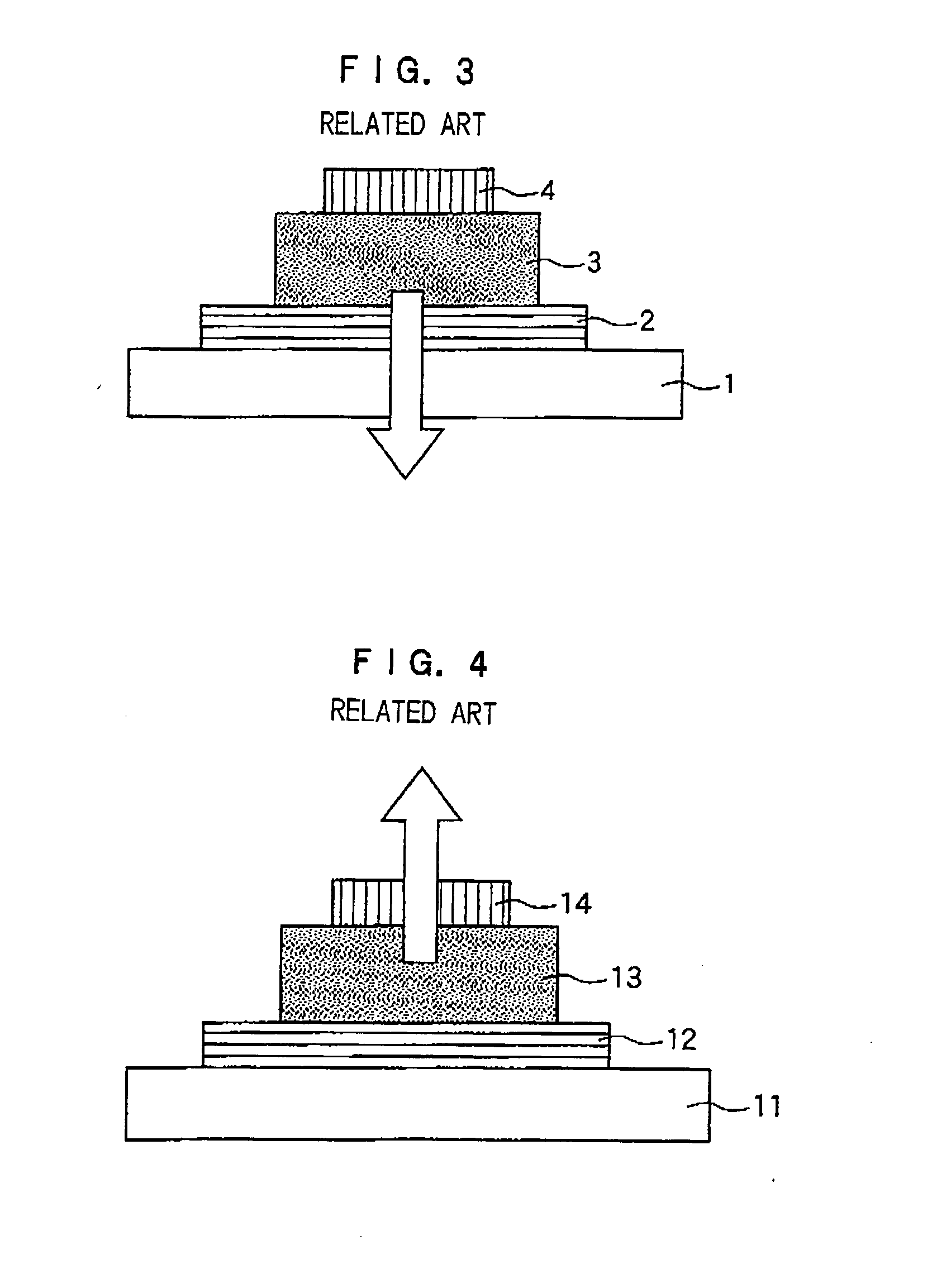Organic EL device
a technology of organic el and device, which is applied in the direction of organic semiconductor devices, discharge tube luminescnet screens, natural mineral layered products, etc., can solve the problems of high operating voltage of organic el devices, difficult to find holes, and the operation of top-emission-type organic el devices may not be easy
- Summary
- Abstract
- Description
- Claims
- Application Information
AI Technical Summary
Benefits of technology
Problems solved by technology
Method used
Image
Examples
example 1
[0067] (1) A glass substrate is subjected to an ultrasonic-wave cleaning with pure water, an acetone, pure water, and an IPA in the order thereof, for 15 minutes respectively.
[0068] (2) A light-reflective anode having a thickness of 60 nm is formed by performing a vapor deposition using a W filament to form an Al layer, and thereafter the surface of the substrate is treated with UV ozone for 20 minutes.
[0069] (3) A first hole-injection layer having a thickness of 20 nm is formed by performing a codeposition in accordance with a vacuum-deposition method, wherein a Ta boat and a Mo boat are used for a 2-TNATA and a V2O5 respectively so that the doping density of V2O5 is 33% by weight.
[0070] (4) A second hole-injection layer having a thickness of 165 nm is formed by performing a codeposition in accordance with a vacuum-deposition method, wherein a Ta boat and also a Ta boat are used for a 2-TNATA and a F4-TCNQ respectively so that the doping density of F4-TCNQ is 0.1% by weight.
[00...
example 2
[0078] In EXAMPLE 2, a Ni anode buffer layer having a thickness of 1 nm is formed on the Al light-reflective anode by performing a vapor deposition in accordance with a vacuum-deposition method, using a W filament, before the surface of the substrate is treated with a UV ozone for 20 minutes.
[0079] Accordingly, the hole-injection layer of EXAMPLE 2 is formed on the Ni layer, not on the Al layer as in the case of EXAMPLE 1.
example 3
[0080] In EXAMPLE 3, a MoO3 anode buffer layer having a thickness of 2 nm is formed on the Al light-reflective anode by performing a vapor deposition in accordance with a vacuum-deposition method, using a Mo boat.
[0081] Accordingly, the hole-injection layer of EXAMPLE 3 is formed on the MoO layer, not on the Al or the Ni layer as in the case of EXAMPLE 1 or EXAMPLE 2.
[0082] Additionally, the thickness of the second bole-injection layer in EXAMPLE 3 is 170 nm, not 165 nm as in the case of EXAMPLE 2.
PUM
| Property | Measurement | Unit |
|---|---|---|
| work function | aaaaa | aaaaa |
| thickness | aaaaa | aaaaa |
| thickness | aaaaa | aaaaa |
Abstract
Description
Claims
Application Information
 Login to View More
Login to View More - R&D
- Intellectual Property
- Life Sciences
- Materials
- Tech Scout
- Unparalleled Data Quality
- Higher Quality Content
- 60% Fewer Hallucinations
Browse by: Latest US Patents, China's latest patents, Technical Efficacy Thesaurus, Application Domain, Technology Topic, Popular Technical Reports.
© 2025 PatSnap. All rights reserved.Legal|Privacy policy|Modern Slavery Act Transparency Statement|Sitemap|About US| Contact US: help@patsnap.com



